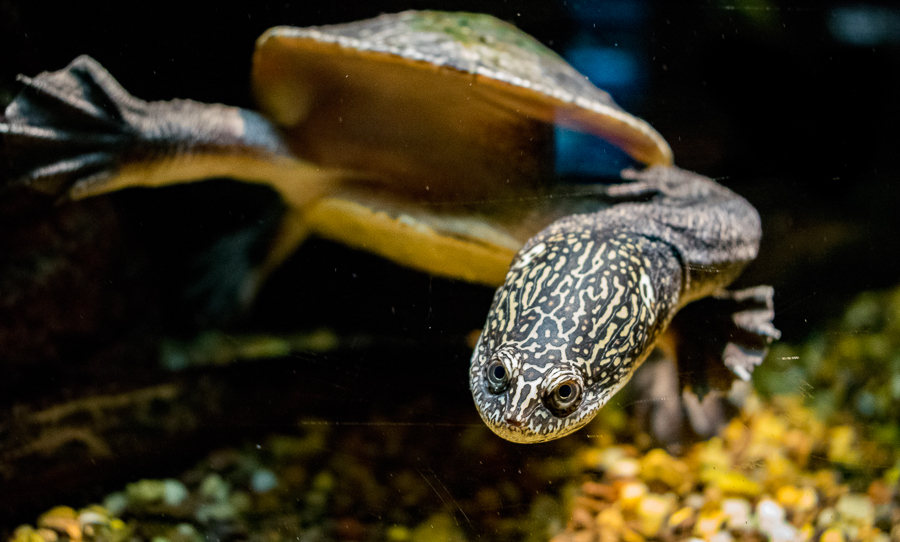
Freshwater turtles face deadly threat of rising sea levels
The threat of sea level rise is concerning for many animals and plant species, as an untold number of organisms could be affected. One particularly vulnerable group is freshwater turtles, since many of them live near oceans or in areas where saltwater and fresh water meet. These areas, called brackish water, will change dramatically if sea levels rise, according to a new study.
“It’s an important project because it takes a step back and looks at turtles globally,” said Josh Ennen, an aquatic conservation biologist at the Tennessee Aquarium Conservation Institute. “And from the paper you can tell that turtles in general aren’t doing well. Over half of them are threatened with extinction or are already extinct.”
Not to be confused with sea turtles or tortoises, freshwater turtles mainly live in the water but can go on land to eat, lay eggs or just to sun themselves. Types of freshwater turtles include red-eared sliders or turtles one can see in rivers and ponds.
The paper examined what effect sea level rise would have on freshwater water turtle habitats. Since most freshwater turtles live near the ocean or in brackish water, a majority of them will experience more sea water in their ecosystems in the future.
“We were stunned that a Western Pond turtle, extremely sensitive to habitat change and declining across its range, was inhabiting a highly managed, tidally influenced brackish water ecosystem in the San Francisco Estuary,” said Mickey Agha, the main author of the paper. “We found that 90 percent of coastal freshwater turtles may see a part of their range inundated by seawater by the end of the century. If they are unable to adapt fast enough to changing water salinities, they may lose that part of their range forever.”
Using a combination of global informations systems and phylogenetic analysis, the study was able to determine which species of turtles were especially vulnerable. Like Google Maps, GIS can analyze the Earth’s surface, but with more sophisticated tools. Phylogenetics is the study of determining the relatedness between species. Using this, researchers could see if many species responded similarly to changing habitats due to their genetics.
“In terms of the conservation, the most important aspect of the paper is, it gives us an initial picture of which species are likely to be most at risk of exposure to future sea level rise and increased salinity that comes with that,” said Justin Nowakowski, a co-author of the study. “Although it’s a broad strokes analysis, it should help us direct future research in monitoring, by giving us an idea of the relative risk for different turtle species.”
Understanding which species are at risk for extinction is important, but another major factor is often overlooked. Most researchers do not know how freshwater turtles fit into the ecosystem. This means that no one knows what will happen to those areas if the turtles disappear.
“We just don’t have a lot of knowledge on the functional roles of turtles in the environment, there’s just not much out there,” Ennen said. “And I think as a freshwater biologist, we’re just now touching on what we know the role of freshwater turtles in their environment [is].”
Studies have shown that sea turtles are essential for their habitats; when taken away from seagrass beds and coral reefs, the areas suffer. However, there is very little research on the importance of freshwater turtles to their ecosystems.
“So this paper could just be another foreboding analysis saying these turtles are in trouble and we need to know what their roles are in the ecosystem,” Ennen said. “We don’t know enough to know what’s going to happen to the ecosystems if turtles disappear and it’s quite likely that a lot of these communities and these ecosystems will lose turtles if half of them are already threatened with extinction.”
Written by: Rachel Paul — science@theaggie.org



